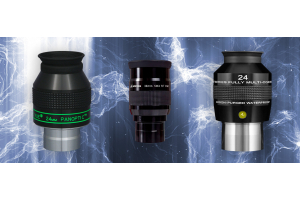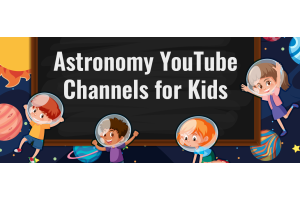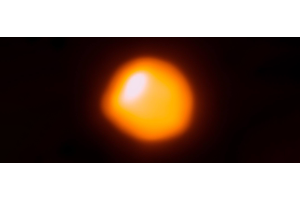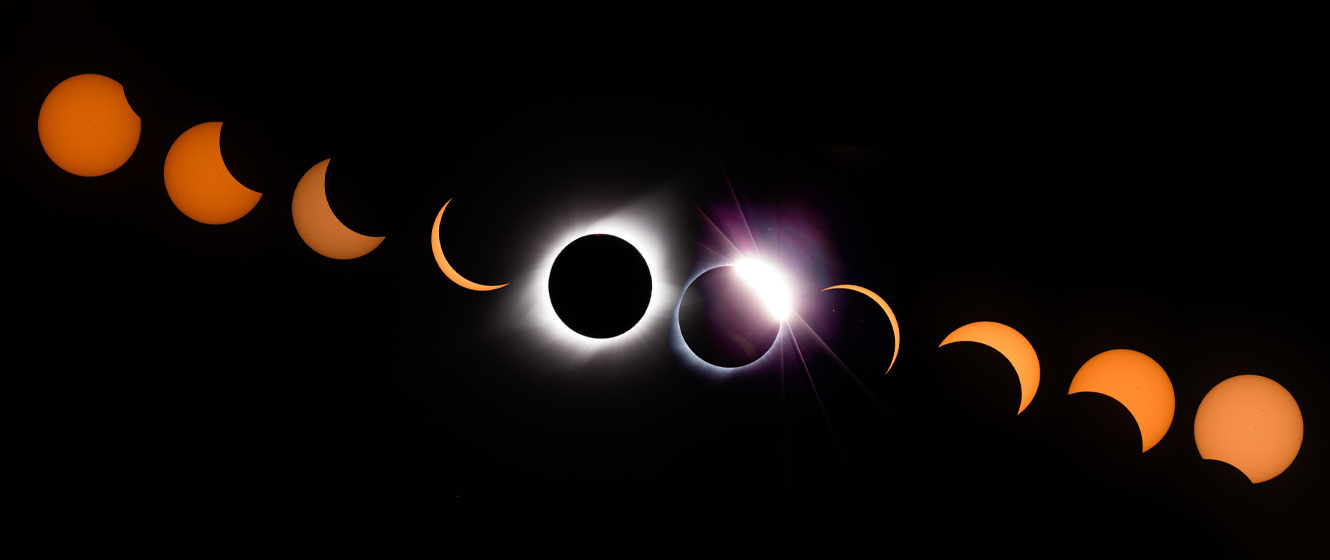
You won’t want to miss the eclipse on April 8, 2024. Not only is a total solar eclipse one of the most awe-inspiring sights you can see, but it will also be your last chance to experience totality from the contiguous United States for twenty years.
It’s the third of three major solar eclipses within the past decade (the other two being in October 2023 and August 2017), and with totality lasting a maximum of 4 minutes and 28 seconds, it’s definitely the best of the three.
Fortunately, there’s still time to plan your trip, but with the path of totality stretching from Texas to Maine, you may be wondering where to go. In this article, we’ll help you decide by looking at five of the best locations - plus some pointers on observing the eclipse once you get there!
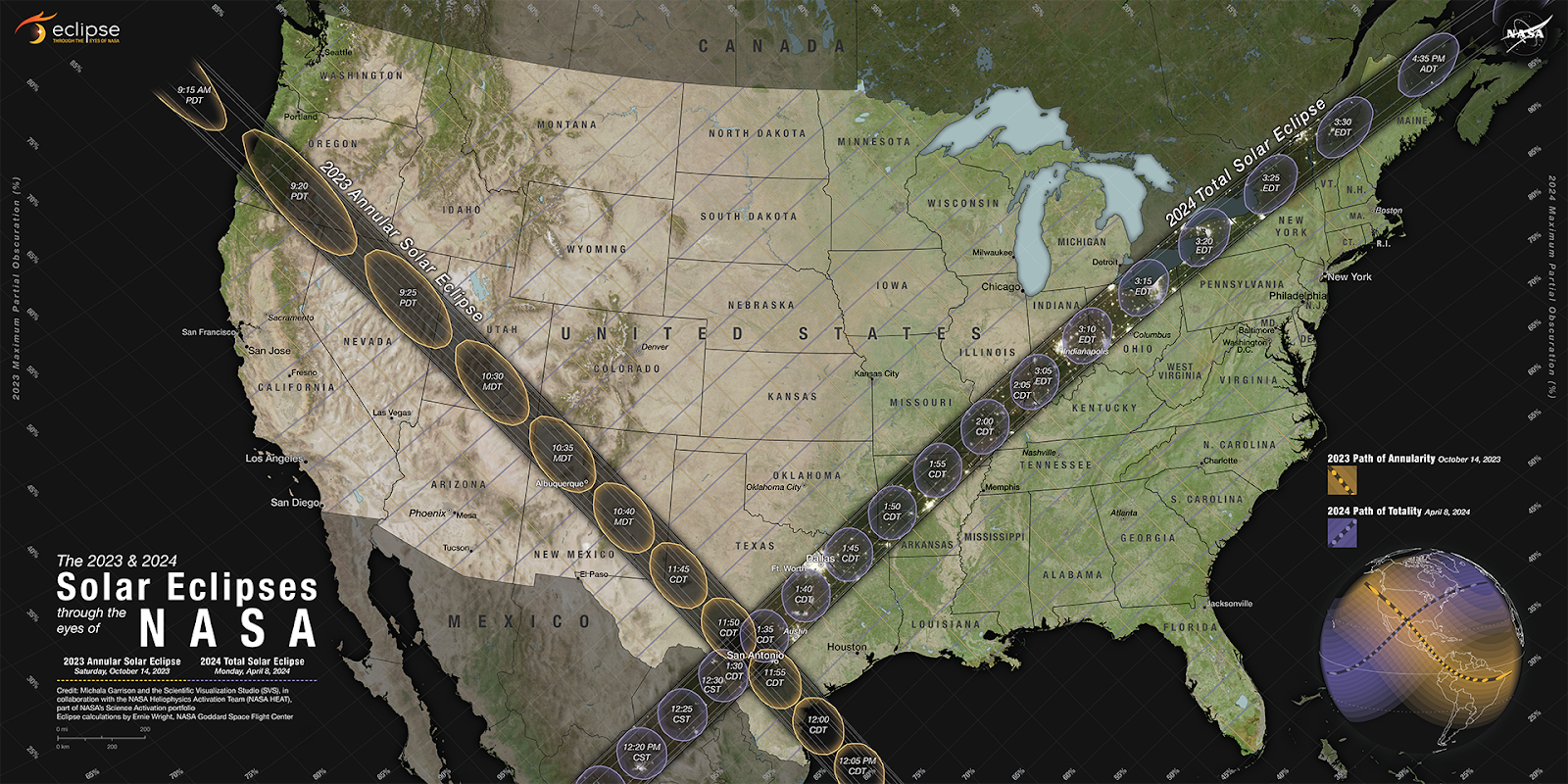
Image Credit: NASA’s Scientific Visualization Studio (https://svs.gsfc.nasa.gov/5073)
What Makes This Eclipse So Special?
A total solar eclipse occurs when the Sun, Moon, and Earth are in alignment, and the Moon appears to pass in front of the Sun. As a result, the Sun’s entire disc is covered, and we experience a total solar eclipse. The sky and our surroundings darken, the temperature drops, and for what seems like the briefest time, the Sun’s corona glows like a halo around the darkened disc of the Sun.
At first glance, you’d be forgiven for thinking that the total solar eclipse of August 2017 was the better one. After all, the path of totality stretched right across the United States, from the Pacific Northwest to the East Coast, but that only tells part of the story.
Roughly 31.6 million people live within the path of totality for this April’s eclipse; that’s nearly 1 in 10 Americans and almost three times more than the eclipse of August 2017. There’s one other key difference: the maximum duration of totality in 2017 was 2 minutes and 40 seconds. Compare that to the 4 minutes and 28 seconds of totality you could potentially experience in April!
(Although you’ll need to be in Mexico to experience totality lasting that long, there are some locations in the US that will witness totality lasting just a little less.)
What about last October’s eclipse? That was an annular eclipse, which occurs when the Moon is slightly further away than usual and doesn’t appear large enough to cover the Sun entirely. In that scenario, observers see a “ring of fire” effect rather than the full, glowing halo that can be seen during a total solar eclipse. In addition, the environment and sky don’t tend to be as dark either, making for a slightly less spooky experience!
The Best Places to Observe the Total Solar Eclipse
Generally speaking, the further south you are, the longer the period of totality and the better your chances of having clear skies. There are, of course, a number of major towns and cities that lie along the path of totality, and you’ll find details of those a little further below. However, if you want to experience one of nature’s most awe-inspiring sights surrounded by nature itself, your options are a little more limited.
With all this in mind, we’ve picked the four best natural locations and the best urban location within the US to see the eclipse. To determine the best choices, we considered both the duration of totality and the potential cloud cover - two important factors that play a large role in picking the ideal location.
1. Ouachita National Forest, Arkansas
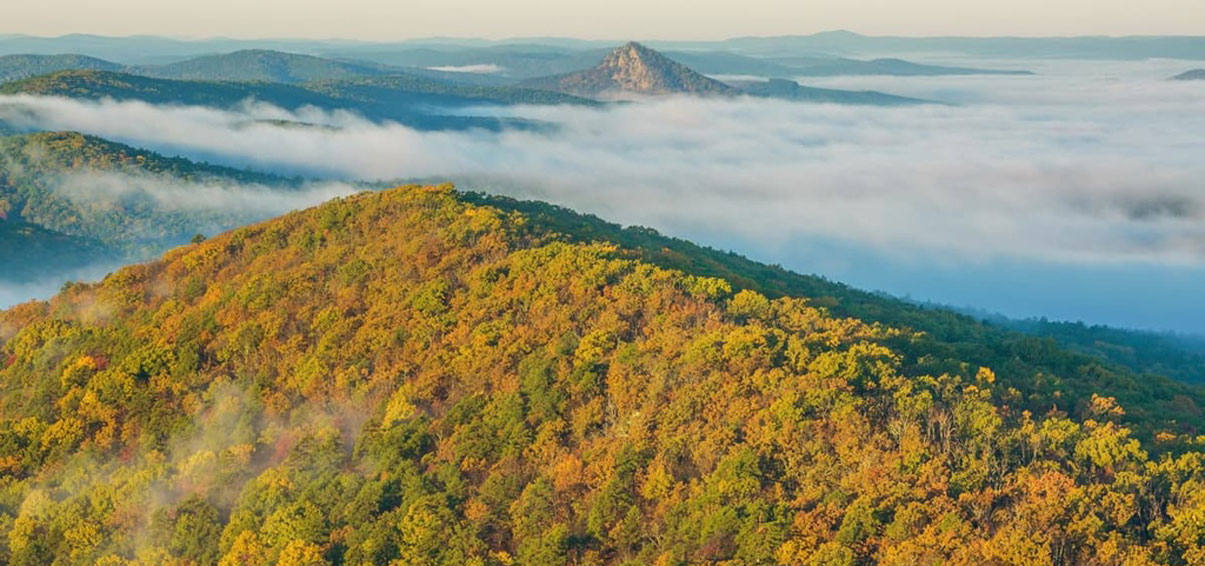
Image Credit: PeakVisor (https://peakvisor.com/park/ouachita-national-forest.html)
While Texas is the first state to experience the eclipse, the center of the path of totality doesn’t pass through any national parks or forests. It does, however, pass through the Ouachita National Forest in western Arkansas, where you can expect totality to last 4 minutes and 19 seconds in Oden, just west of US-270 on AR-88.
First established in 1907 and covering nearly 1.8 million acres, the forest is the oldest and largest of its kind in the south. It’s known for its hills, lakes, and geological features, making this the perfect location for anyone who loves the history of the earth below as much as the wonders of the skies above.
2. Piedras Negras and Uvalde, Texas
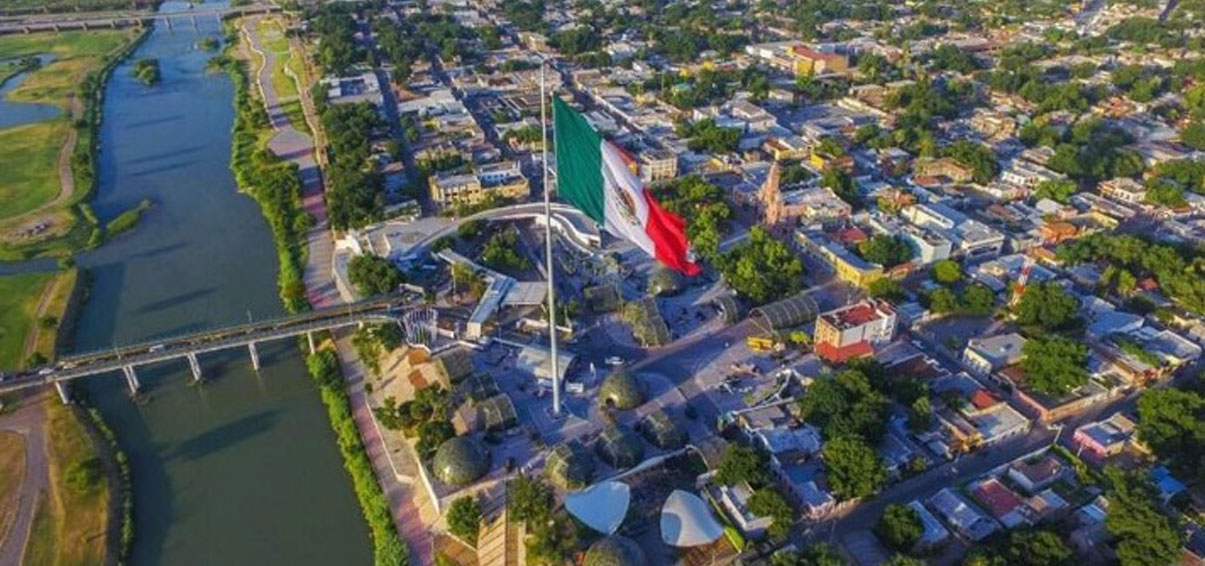
Image Credit: Concanaco Servytur México (https://www.concanaco.com.mx/conocemexico/estado/coahuila-de-zaragoza/piedras-negras)
If you want to be among the first in the US to experience the eclipse, you’ll want to be close to the US/Mexico border, at Piedras Negras. Technically, the town is a part of the Coahuila region of Mexico; the Rio Grande splits the town in two, with the eastern half of the town lying within the US. You’ll experience 4 minutes and 25 seconds of totality at the center of town from 12:10 PM to 12:16 PM.
Alternatively, you might also consider Uvalde, TX. Nearly 70 miles to the northeast and a little further from the center of the path, observers there can expect the eclipse to begin a few minutes later and for totality to last 4 minutes and 16 seconds.
3. Mark Twain National Forest, Missouri
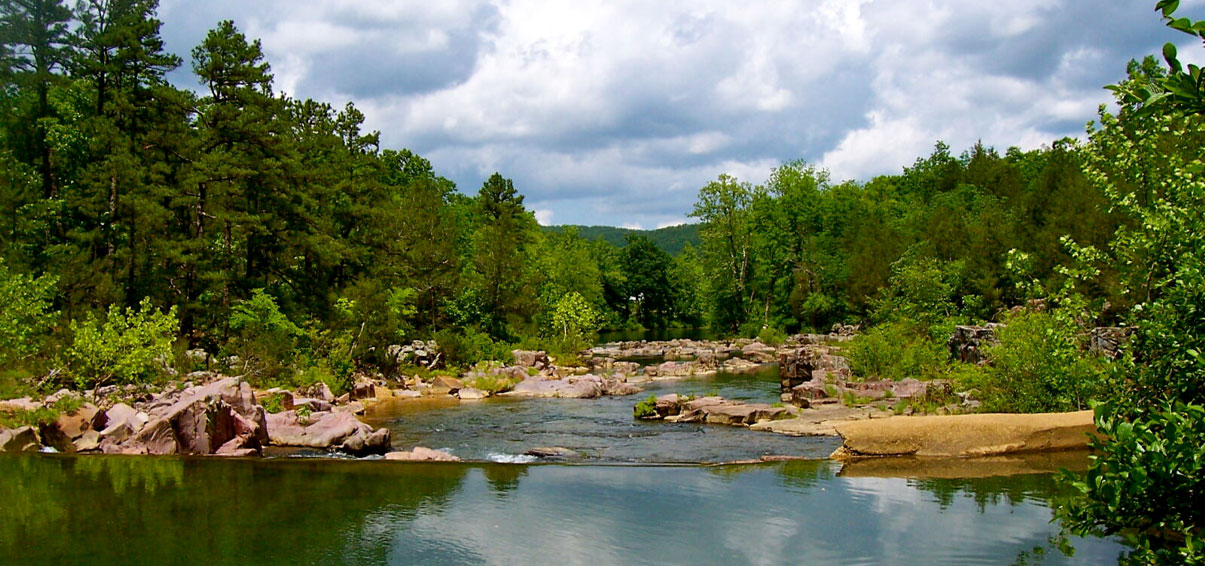
Image Credit: Michelle Turner (https://www.nationalforests.org/our-forests/find-a-forest/mark-twain-national-forest)
Spanning 1.5 million acres of land, the Mark Twain National Forest is a great place for all kinds of outdoor activities, including hiking, horseback and mountain bike riding, canoeing, and kayaking. That said, most of the forest actually lies on the northwestern edge of the path, so you’ll want to be in, or northwest of, Poplar Bluff to make the most of it.
Observers in this picturesque small town will experience 4 minutes and 9 seconds of totality, while those a little further northwest, at the US-60 and US-67 split, will see a few seconds more. Alternatively, check out the Forest Service’s eclipse page for other potential observing locations.
4. Niagara Falls, New York
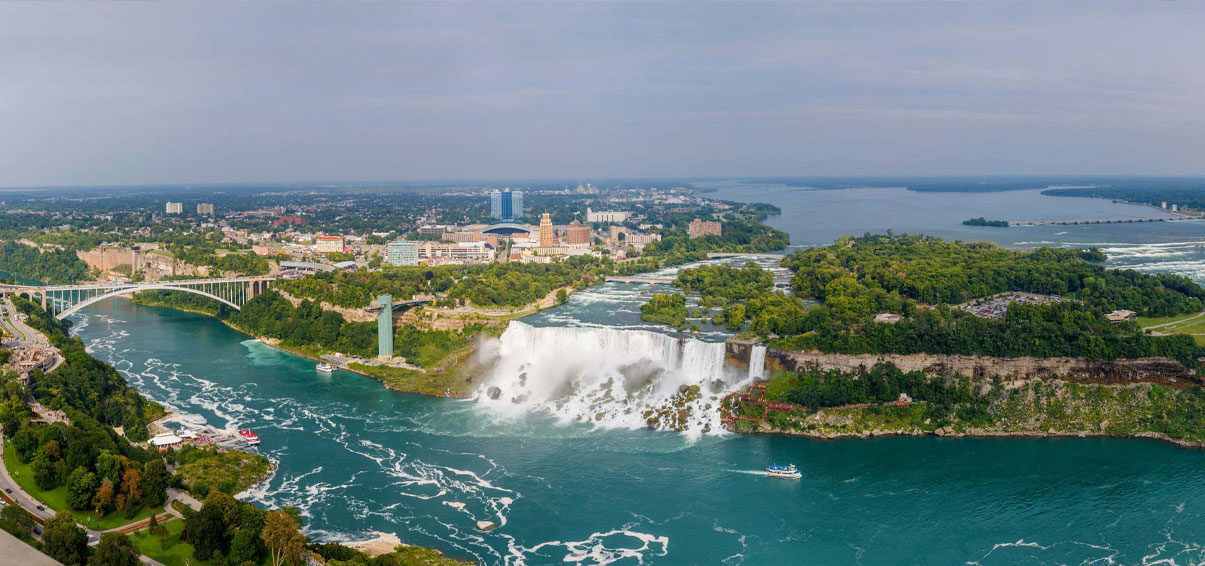
Image Credit: City of Niagara Falls (https://niagarafallsusa.org/)
If you’re looking for a truly unique location from which to view April’s eclipse, then Niagara Falls is it. There’s simply no other place like it within the United States, and with totality lasting 3 minutes and 31 seconds, it’s sure to be a once-in-a-lifetime experience.
The downside? Niagara Falls is arguably the most famous waterfall in the world, and it doesn’t need a solar eclipse to draw a crowd! Hotels may be expensive (and most likely already fully booked), and with clouds potentially obscuring nearly two-thirds of the sky, it’s a risky proposition. However, if you’re willing to take the risk, the gamble could pay off handsomely.
5. Baxter State Park, Maine
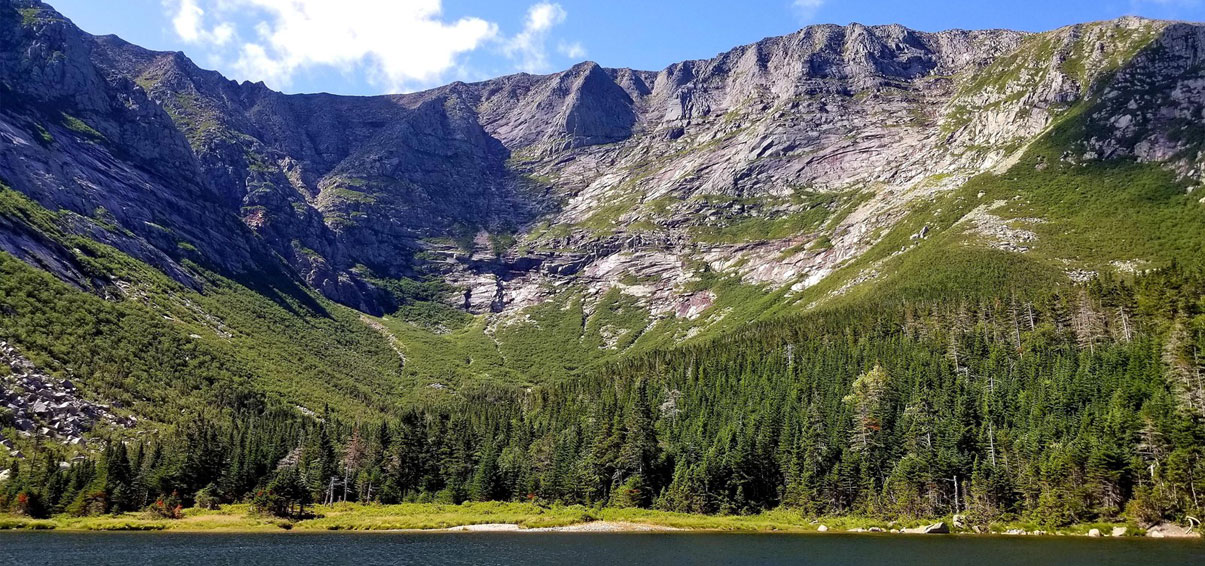
Image Credit: Jason Gablaski (https://www.nps.gov/places/katahdin-baxter-state-park.htm)
Named for Percival P. Baxter, the governor of Maine from 1921 to 1924, the park is now nearly 210,000 acres in size and is home to Mount Katahdin, the highest peak in Maine. It’s known for its diverse ecosystems and is a popular choice for both hikers and campers alike.
While the entire park falls within the path of totality, the center of the path cuts through the park’s southeastern corner, making this the best location to be. More specifically, one of the best locations will be Wassataquoik Lake, where totality lasts for 3 minutes and 23 seconds. The downside is that three-quarters of the sky could be obscured by clouds, and, in anticipation of the large influx of visitors, there are a number of restrictions in place. (See the park’s eclipse page for details.)
The Best Locations to See the Eclipse Within the U.S. (By Totality Duration)
| Location | State/Province | Eclipse Start | Totality Begins | Eclipse Ends | Totality Duration | Cloud Cover |
|---|---|---|---|---|---|---|
| Ouachita National Forest | Arkansas | 12:31 PM | 01:50 PM | 03:09 PM | 4m 19s | 57% |
| Uvalde | Texas | 12:12 PM | 01:29 PM | 02:53 PM | 4m 16s | 52% |
| Poplar Bluff (Mark Twain National Forest) | Missouri | 12:39 PM | 01:56 PM | 03:15 PM | 4m 09s | 55% |
| Niagara Falls | New York | 02:04 PM | 03:18 PM | 04:31 PM | 3m 31s | 62% |
| Wassataquoik Lake (Baxter State Park) | Maine | 02:20 PM | 03:30 PM | 04:40 PM | 3m 25s | 74% |
*Data from Time And Date - https://www.timeanddate.com/eclipse/map/2024-april-8
How to View the 2024 Total Solar Eclipse
Whether you already live in the path of totality or you’re planning a special trip, it’s a good idea to familiarize yourself with how to safely observe the eclipse first.
For starters, while this is, of course, an eclipse of the Sun, even the partial stage can be dangerous, and you should NEVER look at the partially eclipsed Sun through regular binoculars or a telescope, as this can result in permanent blindness. Similarly, looking at the Sun with the naked eye during the partial stage can also damage your eyes and should be avoided.
Totality itself is safe to observe with the naked eye, but again, regular telescopes and binoculars should never be used.
Fortunately, regardless of where and how you choose to observe the eclipse, there are several safe options that will ensure you make the most of the experience - without putting your eyesight at risk.
Naked Eye
While it’s safe to look at the Sun while it is totally eclipsed by the Moon, you should still exercise caution, especially if you’re not sure how long you might have before totality comes to an end.
For the rest of the eclipse, before and after totality, you should avoid looking at the Sun with the naked eye. If you have eclipse glasses, it may be safe to look for a moment or two, but be aware that the Sun can still be dazzling, especially if more than half the disc remains unobscured.
If you plan on using eclipse glasses, be sure only to buy those produced by a recognized and respected manufacturer. For example, with over 60 years of experience, Celestron is a globally recognized brand name and is considered one of the top manufacturers of astronomical equipment in the world. Their EclipSmart Solar Eclipse Glasses are approved by NASA, are highly rated, and are a very affordable option.
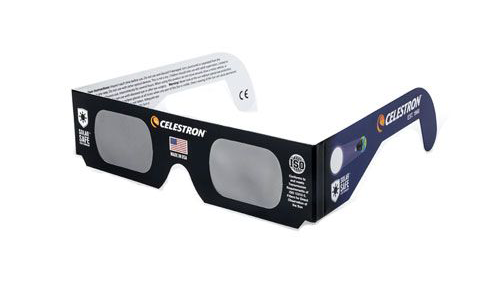
Binoculars
You have two options if you want to observe the partial stages of the eclipse with binoculars.
If you already own binoculars, you must attach a solar filter to the large objective lenses at the end. Getting the right size to match your binocular’s aperture is important, but if you’re not sure, you can always contact us for some expert advice.
Alternatively, you could buy solar binoculars, a stress-free, affordable option that’s specifically designed for observing the Sun, both during the eclipse and after. This means they can also be used for studying the Sun daily - a fascinating pastime in itself!
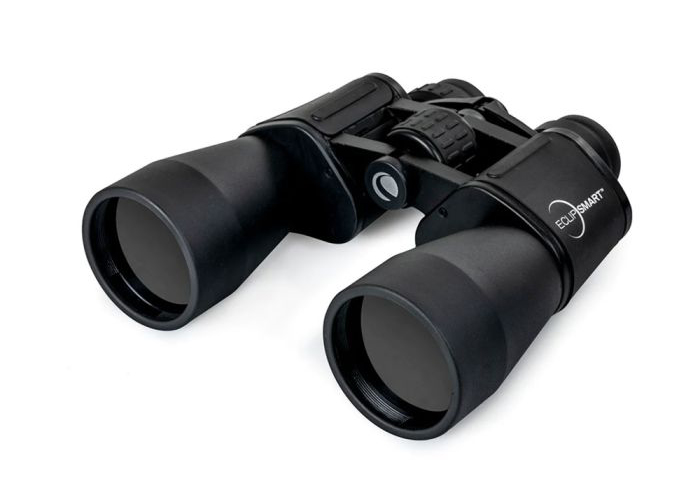
Telescopes
It’s a similar story when it comes to telescopes. If you own a scope already, you can buy a filter to attach to the aperture that will allow you to observe the Sun safely. If you’re unsure which size is best, you can use our Solar Filter Calculator. You can either select your telescope from the dropdown list or enter the aperture diameter in millimeters to get a recommendation.
There are also several dedicated solar telescopes available. Like solar binoculars, these allow you to observe the Sun safely, but with the ability to produce a much higher magnification and, as a result, some amazingly detailed views of our nearest star.
Not only are solar telescopes a valuable addition to the amateur astronomer’s equipment arsenal, but they’re also a worthy investment for astrophotographers. Images of the Sun - both during and after the eclipse - can be breathtaking and can serve as a way to relive the experience for many years to come.
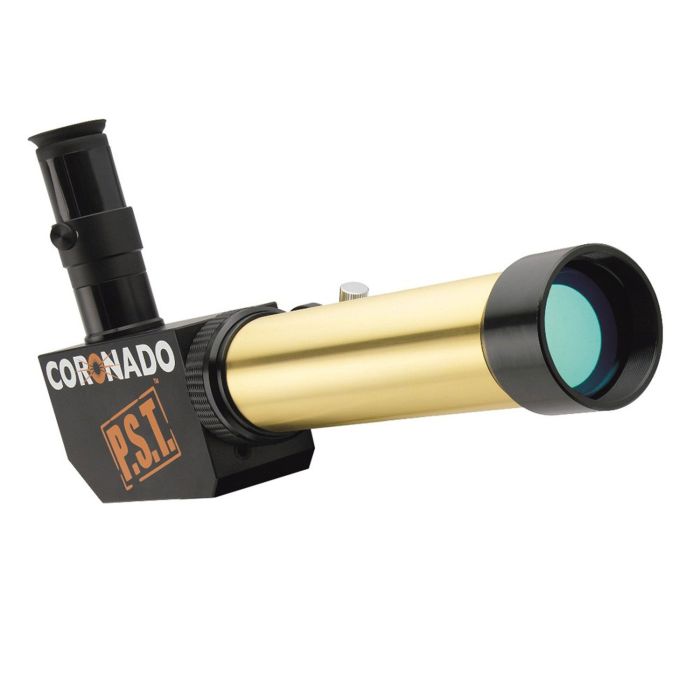
Additional Resources
You can also check out our livestream of the Total Solar Eclipse on April 8, 2024 on the High Point Scientific YouTube channel!
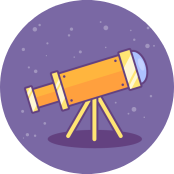
Learn More
Interested in learning more about how to safely observe the total solar eclipse? Check out our guide to Safely Viewing the Sun with Solar Eclipse Glasses!






